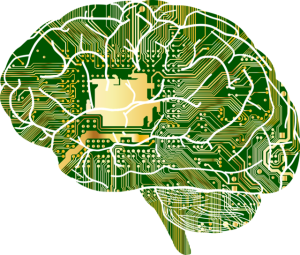Delirium detection in critically ill patients has always been a challenging task for healthcare professionals. However, recent advancements in artificial intelligence (AI) and medical devices have shown promising results in detecting delirium earlier and more accurately, potentially revolutionizing critical care. Researchers have leveraged NVIDIA GPUs and a deep learning model called Vision Transformer to develop a novel method for detecting delirium in older patients admitted to intensive care units (ICUs).
In a Nature publication released last month, a team of researchers from the University of South Carolina, Purdue University, and East Carolina University showcased their breakthrough in delirium detection. By utilizing a rapid-response electroencephalogram (EEG) device alongside AI technology, they achieved an impressive 97% accuracy rate in predicting delirium. This innovative approach enabled researchers to objectively evaluate preventive and therapeutic techniques, ultimately enhancing patient care.
The utilization of NVIDIA GPUs played a crucial role in accelerating the research process. By leveraging the power of GPUs, the researchers completed their work in half the time it would have taken with traditional central processing units (CPUs). This significant reduction in processing time not only expedites scientific progress but also highlights the remarkable computational capabilities of GPUs in healthcare applications.
Delirium affects approximately 80% of critically ill patients, yet conventional clinical detection methods only identify around 40% of cases, leaving a substantial care gap. Typically, ICU patients are screened subjectively at the bedside, leading to inconsistencies and potential misdiagnoses. Moreover, the shortage of qualified technicians and neurologists hampers the implementation of handheld EEG devices, limiting their potential to improve screening accuracy and cost-effectiveness.
By harnessing the power of AI, delirium can be detected up to two days before symptom onset, when patients are more responsive to treatment, eliminating the need for immediate neurologist intervention. This breakthrough enables the use of EEG devices with minimal training, making them a practical tool for healthcare professionals.
The researchers employed a GPU-accelerated AI model called ViT to analyze the EEG data obtained from patients. This deep learning approach allowed for precise delirium detection and classification, providing valuable insights for medical practitioners.
Furthermore, the study demonstrated that a handheld rapid-response EEG device can be employed without the need for bulky EEG machines or specialized technicians. This portable and user-friendly solution paves the way for more accessible and efficient delirium screenings in critical care units.
A promising delirium detection system holds the potential to significantly reduce hospital stays, improve discharge rates, lower fatality rates, and ultimately reduce the economic burden associated with delirium. The estimated cost of treating delirium in the United States alone is a staggering $64,000 per year, making early detection and intervention even more critical.
This study serves as a testament to how the integration of NVIDIA GPUs, advanced AI models, and medical devices can enhance patient care and transform critical care units. With the ability to predict and treat dementia at an early stage, AI-powered technologies have the potential to revolutionize critical care, saving lives and improving patient outcomes.























